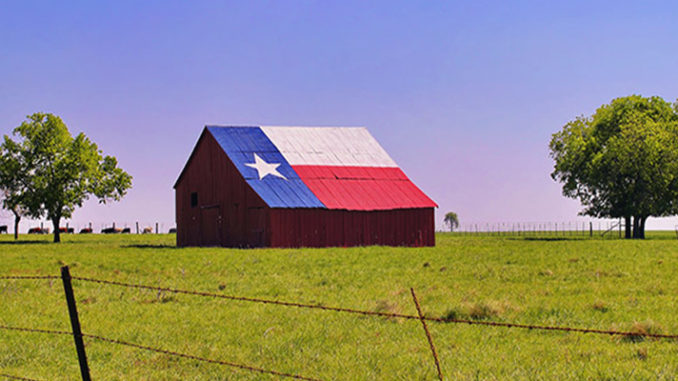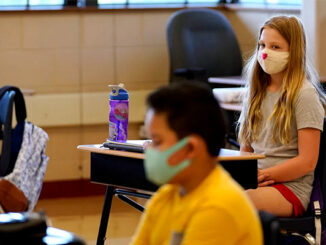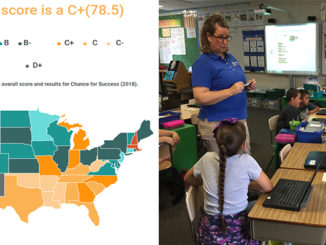
by Maria Casas, Conrad Cantu and Steve Van Matre
Texas has more schools in rural areas than any other state. In the 2015-16 school year, rural schools, as classified by the Texas Education Agency, accounted for 459 of the 1,247 school districts in Texas. Having the privilege to lead school systems in rural Texas, we deeply appreciate the advantages of being part of a rural community.
The school district is the heartbeat of the community — the place we host community functions, celebrate student accomplishments, and sometimes even hold memorials for beloved community members. We are one of the largest employers in town, often hiring multiple members from a single family.
Each of our districts has only one campus serving any given grade level — all 120 ninth-graders in the entire district of Freer are part of a Buckaroo cohort together, for example. Every teacher knows every student — and as superintendents, we do as well. We know whose sister is having a baby, whose brother broke his arm last weekend, and who is out with the flu.
In rural schools like ours, kids are less likely to fall through the cracks because we are able to customize, focus efforts, and individualize for each student. Our communities are filled with unity, loyalty, school pride, and a deep desire to provide every student every opportunity for success, and every student has access to individualized support.
But we also know too well the challenges of being part of a rural district. All public schools in Texas are held accountable for the same standards, assessments, and requirements, regardless of zip code.
In rural Texas, often there is little industry and no place for our students to intern, apprentice, or be exposed to different careers or new innovations. Many in our communities sometimes drive an hour for basic family needs.
According to the Carsey School of Public Policy, “rural children are twice as likely as urban children to live in the vicinity of persistent high child poverty.” Many of our students don’t travel beyond our communities to experience what the world has to offer. It is up to us, as educators, to bring the world of opportunities to them.
While all schools face challenges, rural schools often face funding and resource constraints, have older facilities, and struggle recruiting teachers to an area where there are limited housing opportunities. We aren’t always able to offer differentiated or collaborative professional learning to our staff — a high school chemistry teacher might be the only chemistry teacher in the district. We may be able to offer a couple of strands of programming for career pathways, but unlike an urban or suburban district, we are limited in the offerings for our students. And yet, we need our students to be able to compete nationally and internationally.
For these reasons, we’ve come together to provide our students with a multitude of options they would not receive in their respective districts. What we cannot do alone, we can certainly do together. Through the creation of the Rural Schools Innovation Zone, students will have the opportunity to choose from various postsecondary pathways. Brooks County, Freer, and Premont independent school districts are collaborating because we know we’re stronger together, and our students deserve every opportunity for success.
Students will be able to obtain their high school diploma from a high-performing academic high school, and if they choose, they can also leave with a career certification, a college degree, or a head start on a postsecondary pathway by combining dual enrollment and career and technical coursework to earn college credits and industry certifications while in high school.
During each Texas legislative year, the dreaded word “consolidate” is tossed around and incites fear in every rural school leader. Collaboration and the innovation zone are an answer to the unproductive idea of consolidation. We’ve decided to collaborate by addressing the challenges of rural school systems while maintaining each school’s own unique identities and programs.
As part of the newly formed zone, four of our schools will be able to share resources and ideas, build stronger talent pipelines and staff development programs, and differentiate programming so that every student, no matter their home district, has access to every pathway program offered in the zone.
A Premont Collegiate High School student can study medical sciences at Freer High but still be a valued member of Premont’s highly competitive mariachi program. A Brooks County student can participate in dual credit programs leading to higher education degrees in science, math, engineering, or technology (STEM), all the while being a beloved Falfurrias Jersey.
We’ve set ambitious goals for the schools participating in the innovation zone because we deeply believe in the possibilities. Students will be more engaged, enjoying access to core academics strengthened through the partnership as well as access to engaging and varied early college and career pathways programs that speak to their passions and prepare them for bright futures.
During a recent brainstorming session, educators from all our districts expressed excitement to share expertise through cross-district professional development and collaboration sessions, launch new career pathways programs, align programming while retaining unique school and district identities, and expand extracurricular offerings.
In a perfect world, this should be an easy endeavor. But innovation is not simple, and changing the way we do things can often bring about a sense of uneasiness and discomfort. To their great credit, the elected school boards from our districts have voted to support this initiative, demonstrating the community support for a collaborative pathway that respects each individual district’s identity. We have asked board members, administrators, teachers, students, parents, and community members to trust and to have an open mind — all for the future of our students. They are to be commended for their forward thinking and eternal desire to give our kids a better chance of success after high school. The Texas Education Agency has also provided outstanding support as we worked to make this dream a reality.
There is still much work to do. As we do the hard work of creating outstanding educational experiences for our students, we hope to be a catalyst for other rural schools and are eager to share lessons we learn along the way. This work is too important for the future of our kids and the vibrancy of our region to sit by and wait for someone else to take the leap. Maybe, just maybe, this can be a model for rural America.
Dr. Maria Casas is superintendent of Brooks County Independent School District. Conrad Cantu is superintendent of Freer Independent School District. Steve Van Matre is superintendent of Premont Independent School District.



